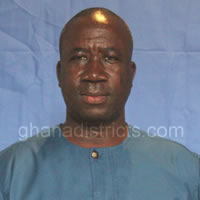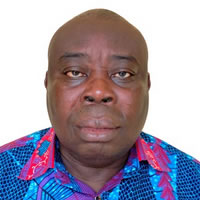Vulnerability
Manifestation of levels of locations of the Poor and its Characteristics
The District exhibits major characteristics of poverty in the form of lack of social amenities such as schools, health facilities, banking, and telephone facilities.
The key District specific poverty indicators are poor food and nutritional status, poor infrastructural facilities and low enrolment rates in these areas, inability to access health facilities despite the health insurance policy, low employment and income, problems of water and sanitation issues which affects the quality of life of the people.
The manifestation of these indicators is prevalent in the Bosome Freho District. In the remote communities economic activities are affected by low incomes, poor road network and general poor levy condition in these areas.
Persons with disability (PWD) have been defined as those who are unable to or are restricted in the performance of specific tasks/activities due to loss of function of some part of the body as a result of impairment or malformation (Ghana Statistical Service, 2012).
Disability can limit an individual’s full participation in a number of activities in life. Estimates from the World Health Organization (WHO) indicates that there are more than 600 million PWDs in the world, of which approximately (80%) live in low-income countries (Ayiku, 2012). In Ghana, PWDs in general are marginalized and suffer from discrimination on account of their disability status. They are often seen as a burden on society and their unfortunate circumstances are viewed sometimes as a curse or punishment.
Furthermore, PWDs have poorer health status and lower educational achievements. Although the Constitution provides for the guarantee of fundamental human rights of all persons including PWDs, the provisions for their protection and support are woefully inadequate. Currently, activities concerning PWDs are allocated 3 percent share of the District Assembly Common Fund. This has brought some relief, especially to those who are not in the formal sector of employment.
Population with Disability
Table 6.1 shows population by disability status and sex as recorded at the 2010 Population and Housing Census (PHC). It indicates that out of a total of 60,397 persons in the district, 2.9 percent are living with some form of disability. In terms of disability by sex, not much difference is observed between the sexes even though the proportion of disabled females (2.9%) are slightly more than males (2.8%) according to Table 6.1.
Types of Disability
According to the Ghana Statistical Service National Report on Disability (2012), it has been reported that nationally, about 2 out of 5 of the population with disabilities (38.3%) have more than one type of disability condition.
Figure 6.1 provides information on percentage distribution of types of disability in the District. Sight disability is the main type of disability accounting for 33.2 percent in the District. Also, almost a third (29.3%) of PWDs suffer from physical disabilities while intellectual disability is 17.8 percent and emotional disability is 17.7 percent.
Distribution of Disability by Type of Locality
Table 6.1 shows the distribution of disability by type of locality in the Bosome Freho District. Since the District has no urban community, the condition of disability per locality is same as that of the entire population.
Disability and Activity
This section is on activity status of persons with disability in the Bosome Freho District. Out of a population of 1,486 persons aged 15 years and older, 55.9 percent are employed, 3.5 percent are unemployed while the economically not active constitute 40.6. Among the various types of disabilities, those with emotional disability recorded the highest proportion of employed (66.4%) and the least employed is those with intellectual disability (48.9%). Persons with physical disability are more likely to be economically not active compared to other forms of disabilities. The proportion of males with disability who are employed (61.5%) is higher than females (50.7%). Among PWDs who are economically not active, females (44.4%) are more than males (36.5%).
Disability, Education and Literacy
Table 6.3 provides information on school attendance and level of education of persons with disabilities. About 45 percent of PWDs have never attended any formal education. Almost half (45.6%) have attained basic education up to at most Junior High level. The proportions of those who have attained educational levels beyond basic education are almost ten percent. Only 6.0 percent PWDs have attained Bachelor’s degree. Females PWDs who have no formal education (56.5%) is higher than males PWDs (32.3%). On the other hand, the proportion of males who have basic education (64.5%) is more than females (36.8%). Males PWDs who have attained Sec/SHS and higher is more than twice (8.6%) higher than females (3.6%).
Date Created : 11/25/2017 5:16:34 AM





